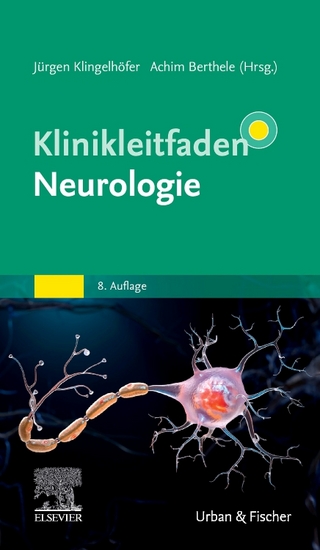
Neurorehabilitation for the Physical Therapist Assistant
SLACK Incorporated (Verlag)
978-1-61711-073-3 (ISBN)
- Titel erscheint in neuer Auflage
- Artikel merken
Inside Neurorehabilitation for the Physical Therapist Assistant, Second Edition Dr. Darcy Umphred and Dr. Rolando Lazaro include a more comprehensive explanation and discussion of intervention techniques used in both pediatric and adult patient populations. Also included is a more thorough discussion of examination tools and their application because of the growing need for the PTA to identify the progress of the intervention using the tools from the initial examination and to complete the discharge examination.
Faculty will welcome the new and expanded instructor’s materials for the classroom that include an online video library illustrating selected examination tools and intervention approaches. In this Second Edition, there are several video clips with Dr. Umphred demonstrating several clinical techniques that can enhance PTA practice. Additionally, an expanded study guide that provides case studies and Q&A for each chapter can be found on www.efacultylounge.com.
Neurorehabilitation for the Physical Therapist Assistant, Second Edition now includes a new chapter on documentation to help the PTA develop the skills necessary for clear record keeping as well as ensuring optimal patient care and reimbursement for services provided.
Features:
A clear delineation of the differences between the frameworks used by medical practitioners, those used by the PT, and those directly related to the PTA
Detailed descriptions of interventions, tests, and measures used by the PTA
Access to a website that includes an online video library and case studies, with new book purchase.
A focus on interactions between types of movement dysfunctions and intervention selection
Neurorehabilitation for the Physical Therapist Assistant, Second Edition is the perfect resource for any physical therapist assistant faculty, student, or clinician interested in the physical therapy management of individuals with various types of neurological conditions.
Darcy A. Umphred, PT, PhD, FAPTA graduated from the University of Washington with a BS in Physical Therapy, from Boston University with a MS in Allied Health Education, and from Syracuse University with a PhD in Theories of Learning and Teacher Education. She has taught in both physical and occupational therapy programs throughout the United States. At the time of her retirement she was professor and chair of the Department of Physical Therapy at the University of the Pacific and played a major role in its evolution to granting a Doctorate of Physical Therapy to its graduates. After retirement she was made an emeritus professor with all the honors that brings. Throughout her professional career and throughout the world, she taught courses, which combined theories of central nervous system function, movement science, and evidence-based practice into an integrated approach to analyzing individuals with central nervous system dysfunction creating functional movement problems. Her love of clinical practice and analyzing movement problems has driven her to question the “why’s” behind patients’ functional restrictions. Similarly, she has studied how our limbic, cognitive, and belief systems affect the interactions between the client and the therapist. She has been the primary editor of the textbook Neurological Rehabilitation, currently in its Sixth Edition and translated into many different languages throughout the world. She has received numerous awards at the local, state, and national levels within the American Physical Therapy Association and was made a Catherine Worthingham Fellow in 2003. Her respect for the profession of physical therapy and the 2 educated clinicians—the physical therapist and the physical therapist assistant—has been demonstrated by her commitment to the responsibilities and services both professionals play in the delivery of physical therapy services throughout the world. It is her belief that physical therapy can and should play a unique role in the delivery of services for individuals with functional movement problems whether those problems arise from disease or pathology or from everyday life experiences. Optimal quality of life is defined by each individual, and it is the therapist’s role to help that person regain as much of that quality available. Rolando T. Lazaro, PT, PhD, DPT, MS, GCS graduated from the College of Allied Medical Professions, University of the Philippines Manila with a BS in Physical Therapy, from the University of the Pacific with a MS in Physical Therapy, from Creighton University with a Postprofessional Doctor of Physical Therapy, and from the Touro University with a PhD in Health Science. Dr. Lazaro has coauthored many research articles and chapters for a variety of textbooks. He is coeditor of both this book and the Sixth Edition of Neurological Rehabilitation. His publications demonstrate his commitment to not only teaching but also contributing to the body of knowledge known as evidence-based practice within and outside the profession of physical therapy. Dr. Lazaro was awarded a Fulbright Senior Scholarship to the Philippines from June to November 2013. Dr. Lazaro is currently an associate professor and co-chair of the Department of Physical Therapy at Samuel Merritt University in Oakland, California. Previously, he was an assistant professor at the University of the Pacific in Stockton, California. He was also a part-time physical therapist assistant faculty at the Professional Skills Institute in Concord, California. Dr. Lazaro is committed to helping others provide evidence-based practice while remaining open to visionary ideas.
Dedication
Acknowledgments
About the Editors
Contributing Authors
Preface
Introduction
Chapter 1 Introduction to Neurorehabilitation for the Physical Therapist Assistant — Rolando T. Lazaro, PT, PhD, DPT, MS, GCS; Nelson Marquez, PT, EdD; — Darcy A. Umphred, PT, PhD, FAPTA; and Dennis Klima, PT, MS, PhD, GCS, NCS
Chapter 2 Normal Movement Development Across the Lifespan — Dale Scalise-Smith, PT, PhD
Chapter 3 Motor Control, Motor Learning, and Neuroplasticity — Darcy A. Umphred, PT, PhD, FAPTA and Fritzie Arce, PT, PhD
Chapter 4 Intervention Procedures — Sharon L. Gorman, PT, DPTSc, GCS and Darcy A. Umphred, PT, PhD, FAPTA
Chapter 5 Examination Procedures — Patricia Harris, PT, MS and Lisa Ferrin, PTA, AS
Chapter 6 Psychosocial and Cognitive Issues Affecting Therapy — Gordon U. Burton, OT/L, PhD
Chapter 7 Documentation in Neurorehabilitation — Shannon Ryals, PTA
Chapter 8 Children With Central Nervous System Insult — Kristine N. Corn, PT, MS, DPT and Cynthia J. Hogan, PTA
Chapter 9 Clients With Genetic and Developmental Problems — Esmerita Roceles Rotor, PT, MAEd, PTRP; Darcy A. Umphred, PT, PhD, FAPTA; — Eunice Shen, PT, PhD, DPT, PCS; and Barbara H. Connolly, PT, DPT, EdD, C/NDT, FAPTA
Chapter 10 Clients With Spinal Cord Injury — Bret Kennedy, PT, DPT; Kelly Ryujin, PT, DPT; and Claire E. Beekman, PT, MS, NCS
Chapter 11 Clients With Traumatic Brain Injury — Dennis Klima, PT, MS, PhD, GCS, NCS
Chapter 12 Clients With Stroke — Becky S. McKnight, PT, MS and James M. Smith, PT, DPT, MA
Chapter 13 Clients With Degenerative Diseases: Parkinson’s Disease, — Multiple Sclerosis, and Amyotrophic Lateral Sclerosis — Rolando T. Lazaro, PT, PhD, DPT, MS, GCS and Amanda A. Forster, PT, DPT, NCS
Chapter 14 Cardiopulmonary Issues Associated With Patients — Undergoing Neurorehabilitation — Ronald De Vera Barredo, PT, DPT, EdD, GCS
Chapter 15 Complementary Therapies or Integrative Health Care — Carol Davis, PT, DPT, EdD, MS, FAPTA and Megan E. Petrosky, PT, DPT
Financial Disclosures — Index
| Sprache | englisch |
|---|---|
| Maße | 178 x 254 mm |
| Themenwelt | Medizin / Pharmazie ► Gesundheitswesen |
| Medizin / Pharmazie ► Medizinische Fachgebiete ► Neurologie | |
| Medizin / Pharmazie ► Physiotherapie / Ergotherapie ► Rehabilitation | |
| ISBN-10 | 1-61711-073-6 / 1617110736 |
| ISBN-13 | 978-1-61711-073-3 / 9781617110733 |
| Zustand | Neuware |
| Informationen gemäß Produktsicherheitsverordnung (GPSR) | |
| Haben Sie eine Frage zum Produkt? |
aus dem Bereich



